Martial Arts Shin Guards and Instep Protectors
-
$17.95
-
$29.95
-
$26.95
-
$29.95
If you're doing light sparring or drills, cloth shin guards are a solid choice. They're easy to slip on, feel flexible, and give you a layer of padding without being bulky. Cloth shin and instep guards are similar but give you some extra protection across the top of your foot. They're great for anyone who's just getting started or wants something simple for controlled training sessions. For something with a bit more structure, foam shin guards are popular in taekwondo and other point-based martial arts. They're lightweight but absorb impact well, so you can train hard without feeling every hit.
Vinyl shin guards are a different beast. These are more structured, with extra padding that's great for medium to heavy sparring. They often include shin and instep protection together, giving you solid coverage from knee to toes. If you're training in full-contact karate, muay thai, or even MMA, vinyl shin guards are going to be a better choice. The outer shell holds up better to repeated impact, and they don't shift around as much during movement. When you're going hard, you want gear that stays put and does its job without needing to be readjusted every two minutes.
The need for martial arts shin guards is about performance and injury prevention. A bruised shin can take you out of training for weeks, and worse, it affects how confidently you throw or block kicks. Karate shin guards help you train harder and smarter by letting you absorb contact without hesitation. Shin injuries are slow to heal, and they stack up over time. If you've been training for any length of time, you've probably seen someone who has to sit out for weeks just from a hard clash of shins.
Historically, shin protection has been around in some form for centuries. Soldiers in ancient Greece and Rome used metal greaves strapped to their legs in battle to deflect swords and spears. In the world of sports, modern shin guards started in soccer during the 1800s and made their way into martial arts as combat sports became more organized and safety regulations were introduced. Taekwondo, in particular, helped popularize foam shin guards thanks to its emphasis on speed and kicking techniques. As competitions became more formal, so did the equipment. Today's martial arts shin protection reflects a mix of that tradition and modern engineering. Materials are lighter, stronger, and more comfortable than ever.
Different martial arts have different needs when it comes to shin guards. Karate shin protectors tend to be streamlined, offering just enough padding to handle fast kicks without getting bulky. In taekwondo, where sparring matches involve fast-paced kicking exchanges, foam shin guards are the go-to. Muay Thai takes a more rugged approach. Fighters often wear heavy-duty shin guards that can handle knees, elbows, and hard checks. Even in mixed martial arts training, you'll see athletes using various types of shin protection depending on the drill.
What's often overlooked is how much more confident you feel when you're properly geared up. A good pair of karate shin guards lets you focus on your technique instead of worrying about getting hurt. And confidence is everything in martial arts. It shows in the way you move, the way you kick, and the way you react. Martial arts shin guards are for anyone who trains seriously and wants to stay in the game long-term.
Our selection includes everything from basic cloth shin guards to vinyl shin and instep protectors. Some are built for casual practice, while others are made for serious sparring. If you're not sure where to start, think about the contact level in your training. Are you doing light drills, or are you regularly checking kicks and absorbing hits? Do you need shin protection that's easy to wash and store, or are you looking for gear that can take a beating? Either way, we've got you covered.
Martial arts shin protection doesn't have to be bulky or annoying. When it fits right and matches your training style, it becomes second nature. You don't even think about it until you're in the middle of a match and grateful it's there. That's the sign of good gear. And at the end of the day, it's about staying on the mat, staying in the fight, and making sure you walk away from every session ready to train again tomorrow.
What's the difference between cloth, foam, and vinyl shin guards?
Cloth shin guards are soft, flexible, and designed for light-contact sparring or beginner training. They're usually made with a breathable fabric shell and a layer of dense foam padding inside. They slip on like a sock and are lightweight, making them a favorite for youth classes, karate drills, or any training that doesn't involve full-force strikes. They're also machine washable, which makes life easier for anyone training multiple days a week.
Foam shin guards are usually a step up in structure. They're often molded into a curved shape and secured with straps instead of being pulled on. These are common in taekwondo and light-to-medium contact sparring. The foam is thicker and absorbs impact better than cloth, offering more protection without adding too much bulk or weight.
Vinyl shin guards are the most durable of the three. They have a tough outer shell made from synthetic leather or vinyl and a dense foam core inside. These are made for heavy sparring, MMA, and styles like muay thai or full-contact karate. They're usually bulkier but offer serious protection for both the shin and the top of the foot, especially in the shin instep versions. Unlike cloth guards, vinyl ones can't go in the wash, but they can be wiped down easily with a disinfectant after training.
Do I need shin guards for karate sparring?
Yes, if you're doing any kind of contact sparring in karate, shin guards are highly recommended and often required. Even in point-based systems where control is emphasized, accidental clashes between shins happen more often than you'd think. A hard check or mistimed block can leave you with deep bruises that take weeks to heal. Karate shin guards help absorb that impact and let you train harder without hesitation.
Different schools have different rules, but most dojos that allow free sparring will either require or strongly suggest some form of shin protection. Good gear also prevents injuries to your training partners, especially during fast exchanges or drills where you're both throwing kicks at the same time.
Can kids use the same shin guards as adults?
Not exactly. Kids need shin guards that are sized specifically for their height and leg length, and most adult shin guards will be too large, bulky, or stiff for them. Using the wrong size can mess with movement and actually increase the chance of injury. That's why most martial arts shin guards come in youth sizes with slightly softer padding and a more flexible fit that won't restrict a child's kicks or footwork.
Some styles, like cloth shin guards, are especially popular in kids' classes because they're lightweight, easy to put on, and machine washable. Plus, they don't feel overwhelming or intimidating like bulkier vinyl options might. If you're buying for a child, always check the sizing chart and aim for a snug, secure fit without cutting off circulation or sliding around during class.
Are shin guards required in taekwondo tournaments?
Yes, in most taekwondo tournaments, shin guards are required. Taekwondo is a striking-heavy martial art with a strong emphasis on kicks, so protecting the shins is critical. Sanctioned competitions, especially those under organizations like World Taekwondo (WT) or the International Taekwondo Federation (ITF), typically have specific rules about what kind of gear is allowed, including foam shin guards or shin and instep protectors.
The required gear usually has to meet certain safety standards and be worn under the uniform. Many tournaments only allow approved brands or styles, so it's a good idea to check the event's rulebook before showing up. Even in informal school-level sparring events, shin guards are usually part of the mandatory gear list to keep things safe and controlled for both competitors.
How do I clean and maintain cloth shin guards?
Cloth shin guards are easy to clean, which is a big reason they're so popular in karate and taekwondo classes. Most can go straight into the washing machine. Just toss them in a mesh laundry bag to keep the elastic from getting stretched out or tangled. Use cold water and mild detergent, and skip the bleach or fabric softener. After washing, let them air dry completely before throwing them back in your gear bag. Don't put them in the dryer, since the heat can damage the foam padding or shrink the fabric.
If your shin guards start to smell in between washes, you can spray them with a disinfectant made for athletic gear or use a 50/50 mix of white vinegar and water. Let them dry in open air, not in a gym bag or closed space where moisture can lead to mildew. A little regular maintenance goes a long way in keeping your gear fresh, clean, and ready for sparring.
What type of shin guards are best for beginners?
For beginners, cloth or foam shin guards are usually the best choice. They're lightweight, easy to move in, and provide enough protection for light-contact sparring and drills without feeling bulky or restrictive. Most new martial artists don't need heavy-duty vinyl guards right away unless they're jumping into full-contact styles like Muay Thai or MMA. Cloth shin guards are especially good for younger students or anyone in a traditional karate or taekwondo class.
Foam shin guards with strap closures are another solid option for beginners who want a bit more structure and impact absorption. They're often used in taekwondo because they mold to the leg better than cloth slip-ons and stay in place during fast-paced sparring. The key is to find a pair that fits well, doesn't slide around, and lets you focus on learning technique without worrying about getting hurt.
Will shin guards protect me from injuries like bruising or fractures?
Shin guards are designed to help reduce the risk of common injuries during martial arts training, such as bruising, scrapes, and light impact. While they can absorb and distribute some of the force from kicks and blocks, no protective gear can guarantee complete injury prevention. The level of protection depends on the type of shin guard you're using, how intense the training is, and how well the gear fits.
Cloth and foam shin guards are commonly used for light-contact drills and point sparring, where the goal is to control strikes rather than deliver full power. For more intense training, vinyl shin guards with extra padding may offer better coverage and impact absorption. It's important to choose the right gear for your style and contact level, but also to train responsibly and follow your instructor's safety guidelines.
RECENTLY VIEWED








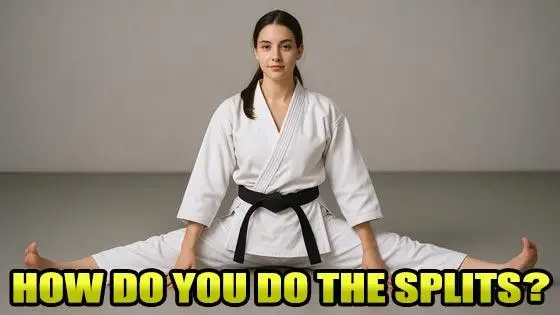

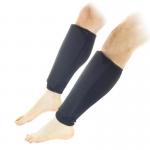


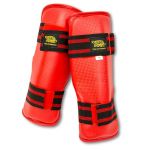
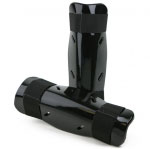
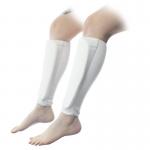
 (1)
(1)



















